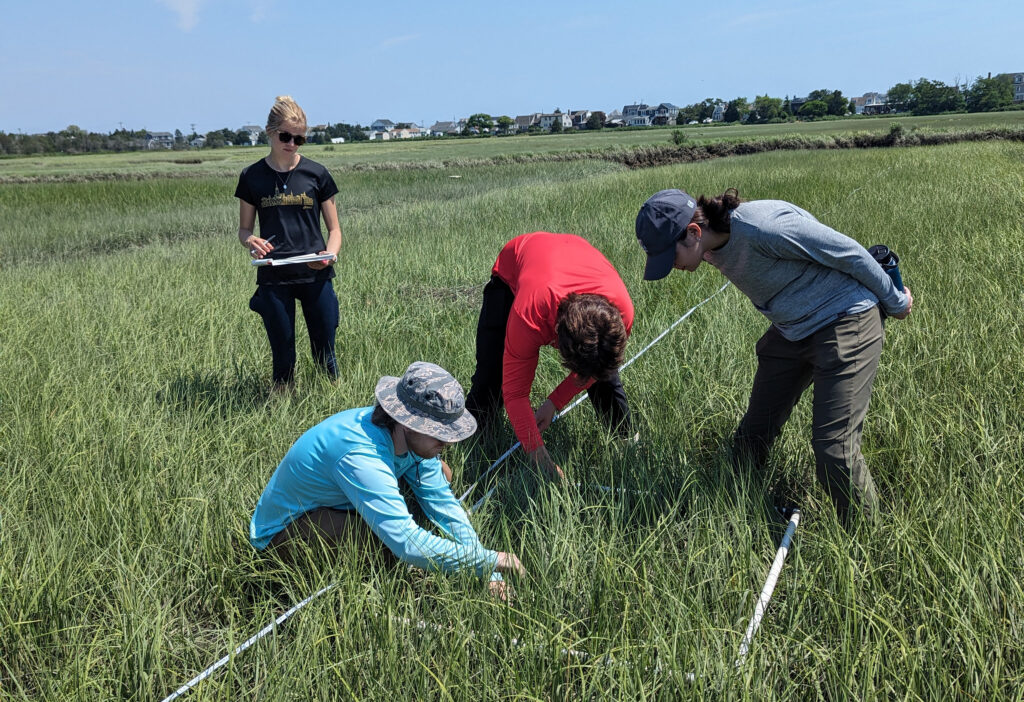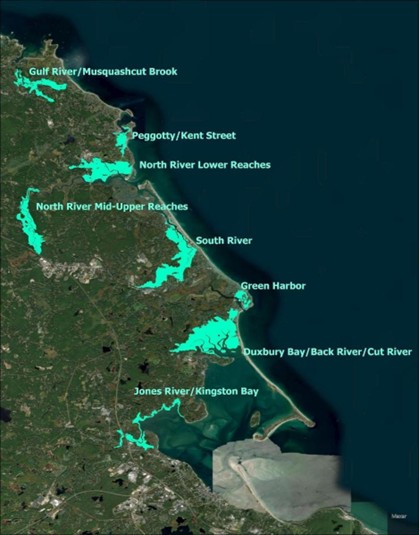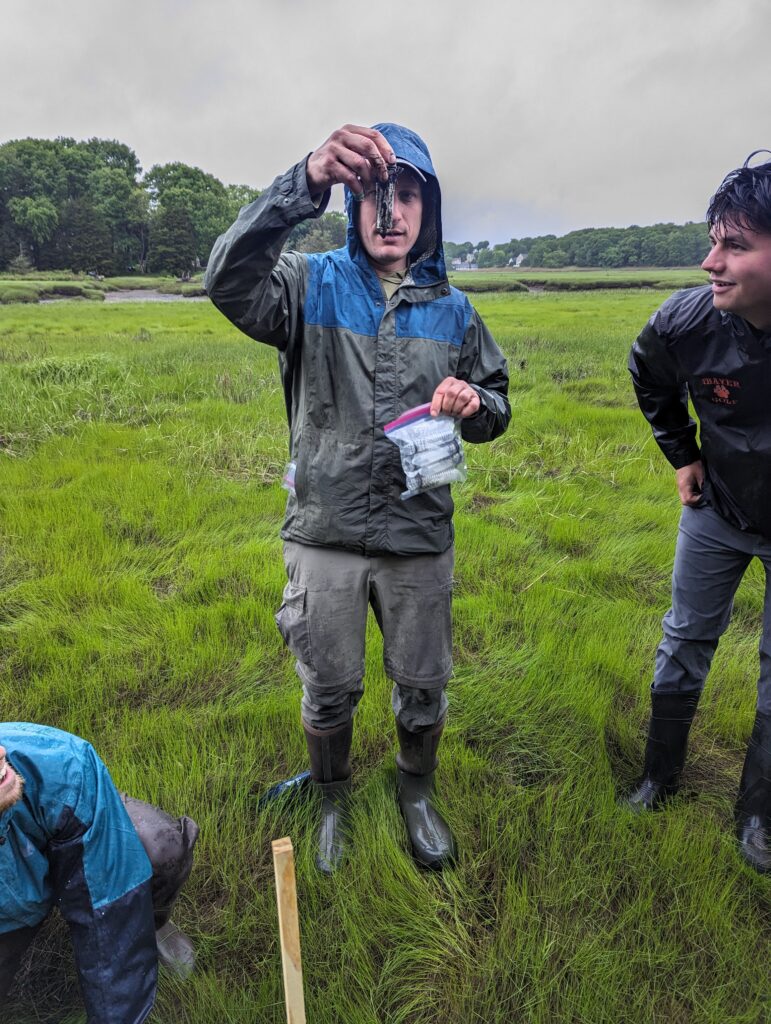
A highlight of 2025 was the completion of our two-year salt marsh prioritization study and report. This report presents the results of a multi-partner assessment and prioritization strategy for salt marsh restoration potential across the South Shore of Massachusetts. Approximately 3,400 acres of saltmarsh across eight distinct areas in six towns were evaluated. The project, led by the NSRWA and MassBays, in partnership with Mass Audubon, UMass Amherst, and UMass Boston was supported by the Massachusetts Office of Coastal Zone Management. The primary goal was to identify marsh vulnerability, evaluate restoration potential, and provide actionable recommendations to enhance marsh resilience in the face of accelerating sea level rise and anthropogenic pressures.
Eight key marsh complexes were assessed through a combination of field surveys, sediment monitoring, and GIS-based analysis. These sites span diverse geomorphological, hydrological, and land-use conditions, from the extensive Duxbury Bay marshes to smaller suburban marsh units like Green Harbor and Peggotty/Kent Street. Analytical methods included vegetation transects, sediment trap deployments, elevation and resilience modeling, unvegetated-to-vegetated ratios, and sea-level rise simulations to predict future marsh migration potential.
Key findings include:
- Marsh Loss: Between 2011 and 2021, approximately 36 acres (1.2%) of salt marsh were lost across all study sites, with the South River experiencing the greatest relative and absolute loss (1.86%, 14.2 acres).
- Resilience: Duxbury Bay exhibited the highest percentage of resilient marsh (89.6%), while the North River Mid-Upper Reaches showed the lowest (29.4%). Average resilience across all sites was 70.1%.
- Sediment Dynamics: Sediment deposition rates were adequate to support marsh accretion at most sites (median ~6.2 mm/yr). Marine-derived sediment is the primary source due to low fluvial sediment inputs.
- Marsh Migration Potential: The Gulf River and Peggotty marshes exhibited the greatest potential for marsh migration under projected sea level rise scenarios, with gains of up to 47% and 43% respectively by 2100. Migration potential varied between upland and vegetated wetland transitions depending on site topography and land use.
- Vegetation Health: Most field sites were dominated by traditional salt marsh species (e.g. Spartina, Distichlis, etc), although signs of stress such as panne formation, Phragmites invasion, and surface instability were observed at several locations, particularly at Green Harbor and Kingston Harbormaster.

Based on combined ecological, geomorphic, and land ownership factors, the report identifies and prioritizes restoration opportunities. Restoration opportunities are grouped into short-, medium-, and long-term needs. Short-term opportunities generally mean that marsh lifespan categorization was determined as “Protect/Restore”; stressors and solutions are fairly obvious; access and parcel ownership is straightforward; and restoration approaches could advance in one to five years. Medium-term sites generally have less urgent needs or may have more challenging approaches in terms of access, ownership, size, or other factors. Restoration approaches at these sites are likely to take longer to develop and may be on a three to ten year timeline or more. Long-term sites generally have no immediate restoration needs. Actions at these sites may include land-protection, long-term monitoring, or larger scale protections.
-

Figure 3. Dr. Brian Yellen of UMass Amherst teaches studies about sediment dynamics while collecting key data for the study. Short-term priority sites and actions:
- Scituate Conservation (North River Lower Reaches)
- Green Harbor (Marshfield)
- Kingston Harbormaster Site
- Medium-term priority sites:
- South River
- North River Mid-Upper Reaches
- Calista Property, Kingston
- Long-term
- Duxbury Bay Complex
- Gulf River/Musquashcut Brook
- Upper North River
- Third Cliff
- Community Engagement Opportunities:
- Sites with strong educational or visibility benefits, such as Peggotty/Kent Street and Kingston Harbormaster, are suitable for pilot-scale restoration and public outreach.
The results of this study provide a foundation for strategic salt marsh conservation, restoration, and adaptation planning on Massachusetts’ South Shore. Recommendations include targeted pilot projects, enhanced monitoring of vegetation and sediment trends, and improved management of tidal restrictions and stormwater infrastructure. The findings are intended to inform both near-term restoration investments and long-term resilience planning under changing climatic and coastal conditions.
We are now taking these results and moving into the restoration planning phase. We hope to be able to begin pilot-scale restoration efforts on at least one priority marsh parcel as we move into 2026.
The full report can be accessed here.
Thank you to all of our partners and especially to the Massachusetts Office of Coastal Zone Management for making this project possible.


